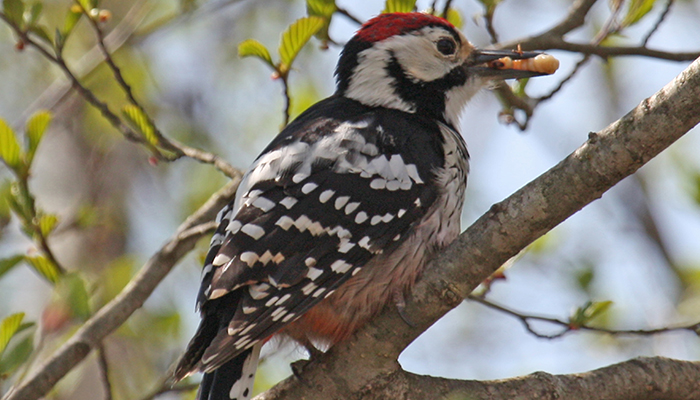
English: White-backed Woodpecker
Russian: Белоспинный дятел
Mongolian: Хондлойцагаан тоншуур, Хондлой цагаан тоншуул
German: Weissruckenspecht
French: Pic a dos blanc
Japanese: オオアカゲラ (O-aka-gera)
Body length: 25-28 cm
Breeds
in wet mixed forest, often by lakes and rivers, with plenty of dead and dying
deciduous trees (aspen, sallow, alder, birch); thus requires areas undisturbed
by forestry operations, so now greatly threatened. Food insects, including
larvae of longhorn beetles. Spends much time near ground pecking at alder bases
etc., often leaving traces in form of large, deep craters (almost as Black
Woodpecker). Mobile and unpredictable, but not particularly shy. Large
territory. Nest hole c. 5 ½ x 6 ½ cm.
Identification: Slightly bigger
than Great Spotted Woodpecker,
longer-necked, with more angular head profile and longer bill. Vent light red,
poorly demarcated, belly faintly tinged buffy-pink. Flanks streaked. Black band
on head-side does not reach crown, leaves white ‘throughway’. Despite its name,
white back can be hard to see, but at least in flight lower back is
conspicuously white. Perched bird in side view told by white median coverts
forming broad horizontal patch, broader than white remex bars. ♂ has all-red
crown, ♀ black. Variation: Birds in SE Europe and Turkey have vermiculated
white back and can also have barred flanks.